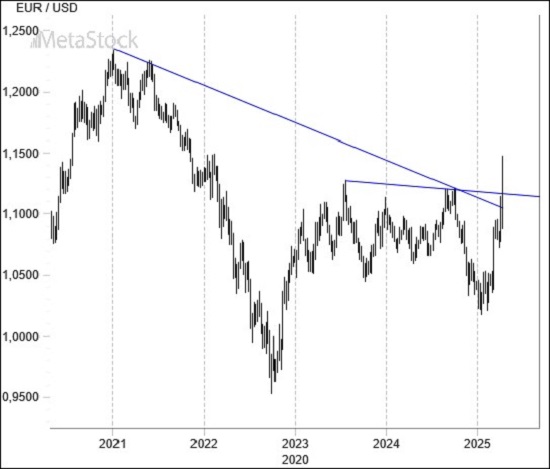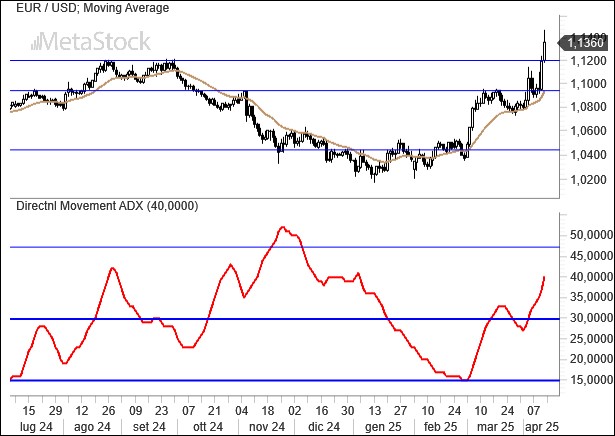- Despite cracks within the U.S. administration, which at least offer a glimmer of hope for a partial reversal, Trump remains unwavering. The trade war with China continues, with U.S. ten-year yields soaring, signaling capital outflows from America.
- Europe has suspended counter-tariffs following Trump’s decision to implement a 90-day moratorium, providing space for negotiations aimed at recalibrating and reducing the tax burden from tariffs. Central banks are on the sidelines, but rising market yields appear to diminish their room to maneuver on interest rates.
- EurUsd has successfully breached the stubborn 1.10 resistance, and the breakthrough at 1.12 has paved the way for much more substantial gains in the coming months.
Trump’s Trade War Escalates: U.S.-China Tensions and Internal Divisions
The trade war initiated by Donald Trump on April 2nd does not appear to have fizzled out just yet. After announcing tariffs for every country—then retracting them for 90 days with a 10% base rate across the board—the focus shifted to China. Tariffs have been ramped up by over 100%, and this has been met with a 125% retaliatory tariff on all American imports from Beijing.
Europe welcomed Trump’s olive branch as a sign of willingness to negotiate, suspending any counter-tariff decisions for 90 days. However, cracks are beginning to appear within the White House, with staunch tariff defenders at odds with Republican politicians who fear damage to their image ahead of the 2024 mid-term elections. Even Elon Musk has voiced his displeasure, criticizing Trump’s decisions, particularly the architect of these policies, Navarro.
The hope is that some form of policy reversal may occur in the coming weeks, especially given the ongoing dollar and bond market exodus, alongside a nearly 20% drop in the U.S. stock market. Macroeconomic data so far show no signs of an economic slowdown, but in the coming weeks, we can expect a drop in confidence and the first PMI figures, providing us with an appetizer for what’s to come. The sentiment is that both U.S. and international corporate investments are pausing, awaiting greater clarity.
Given the risks of inflationary spikes, it is unlikely that the Federal Reserve will act as it would in the case of an impending economic recession, i.e., by cutting interest rates. Swap curves seem to have abandoned that scenario as well. The ECB, too, is becoming more cautious about adjusting the cost of money, given the growing inflation risks triggered by the tariffs. The decisions made by central banks at upcoming monetary policy meetings will be particularly interesting.
Technical Analysis: EurUsd Breaks Key Resistance, Targeting Higher Levels
After a very brief pause, the EurUsd exchange rate resumed its rally, breaking through all resistance levels that had contained its momentum for so long.
The capital outflows from the U.S. are evident, with the euro—along with the Swiss franc and the Japanese yen—benefiting from its status as a safe-haven currency. Having surpassed the 1.10/1.12 levels, the focus now shifts to even higher targets, with the possibility of the euro reaching 1.20 appearing far less improbable.

There are moments when technical analysis provides textbook-perfect charts, and this is one of them. A case in point is the ADX (Average Directional Index), which—just as theoretical technical analysis textbooks suggest—had a value above 30 during a pullback, before resuming its upward trend after testing the 20-day moving average.
The rebound has pushed the ADX above 30 again, confirming that the euro’s rise (and the dollar’s fall) is far from over, and we can reasonably expect new highs in the coming weeks.



Leave a Reply
You must be logged in to post a comment.